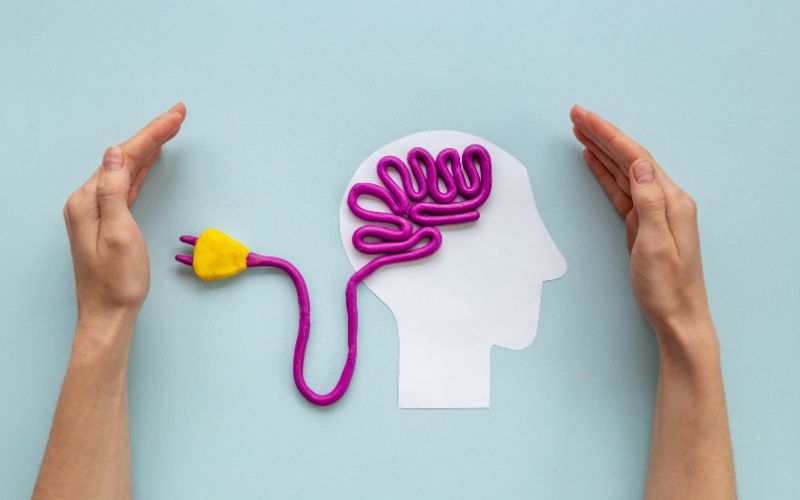Ever walked into a room and instantly felt calm or, conversely, stressed? The spaces we inhabit have a profound impact on our mental well-being, influencing our mood, stress levels, and even our ability to focus. The connection between our environment and our mind is deeply rooted in psychology, making it essential to create spaces that nurture rather than hinder our mental health.
The Power of Colors
Colors are more than just decorative choices; they carry psychological weight. Cool tones like blues and greens are known for their calming effects, making them ideal for bedrooms or relaxation areas. On the other hand, warm tones like reds and yellows can energize and stimulate, which might be useful in creative spaces but could lead to anxiety if overused. The key is balance—selecting colors that align with the purpose of the room and the emotional atmosphere you wish to create.
Natural Light and Its Benefits
Natural light is a powerful tool for improving mental health. Exposure to sunlight increases the production of serotonin, a hormone that boosts mood and helps with focus. A well-lit space with ample natural light can reduce the symptoms of depression and anxiety, making it vital to incorporate large windows or skylights where possible. If natural light is limited, using light therapy lamps can be a good alternative to mimic the effects of sunlight.
The Role of Nature
Bringing nature indoors through plants, water features, or natural materials like wood and stone can have a significant impact on mental well-being. Studies have shown that indoor plants can reduce stress, improve air quality, and even enhance cognitive function. The presence of greenery creates a connection with nature, fostering a sense of peace and grounding that is often lost in urban environments.
Clutter and Mental Clarity
A cluttered space often leads to a cluttered mind. The psychology of clutter is linked to feelings of anxiety, stress, and overwhelm. A tidy, organized environment promotes mental clarity and reduces distractions, allowing you to focus better and feel more at ease. Decluttering your space regularly and adopting minimalist principles can create a more serene and mentally freeing environment.
Spatial Layout and Flow
The way a space is laid out affects how we move through it and how we feel within it. Open, flowing spaces can promote a sense of freedom and creativity, while cramped, poorly designed areas can lead to feelings of confinement and stress. Consider the flow of movement in your home or workspace, ensuring there is a natural, unobstructed path that allows for easy navigation. This not only improves the functionality of the space but also contributes to a calmer, more organized mind.
Personalization and Emotional Connection
Your environment should reflect your personality and values. Personalizing your space with items that hold sentimental value, such as family photos, artwork, or souvenirs, can create a strong emotional connection to your surroundings. This connection fosters a sense of belonging and comfort, which is crucial for mental well-being. However, it’s essential to strike a balance—too many personal items can lead to clutter, while too few can make a space feel impersonal and cold.
The Importance of Quiet Spaces
Noise pollution is a significant stressor, particularly in urban environments. Creating quiet, soundproof areas in your home or workplace can offer a retreat from the constant noise, allowing your mind to rest and rejuvenate. Whether it’s a dedicated meditation room, a cozy reading nook, or simply a quiet corner, these spaces are essential for mental recovery and relaxation.
Scent and Its Subtle Influence
Scent plays an often overlooked role in how we perceive and feel about a space. Certain scents can evoke memories, reduce stress, or boost mood. Incorporating aromatherapy through essential oils, scented candles, or fresh flowers can subtly enhance the ambiance of a room. Lavender, for example, is known for its calming properties, while citrus scents can invigorate and energize. Choosing the right scents for different spaces can help create the desired emotional atmosphere.
Mindful Space Design
Designing spaces with mindfulness can greatly enhance mental well-being. Mindful design focuses on creating environments that support mental health by considering all aspects of the space, from color and light to layout and personalization. This approach encourages intentionality in how spaces are used, ensuring they serve the needs of the mind as well as the body.
Conclusion
Your environment is more than just a backdrop to your daily life; it’s an active participant in your mental health journey. By understanding the psychology of spaces, you can make intentional choices that create environments conducive to peace, clarity, and well-being. Whether it’s through color, light, nature, or personalization, designing spaces that align with your mental health needs is an essential step toward a more balanced and fulfilling life.

